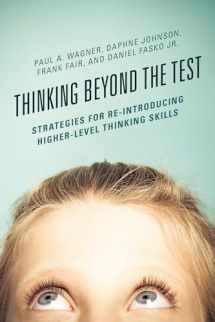
Thinking Beyond the Test: Strategies for Re-Introducing Higher-Level Thinking Skills
Book details
Summary
Description
In the wake of initiatives such as No Child Left Behind and the use of high-stakes testing, the emphasis in schools has been on drill and practice for the test. Genuine understanding and critical thinking have been increasingly shortchanged. As a result, students have fewer opportunities to advance their insight into cognitive and emotional challenges, even though both teachers and parents recognize the importance of developing deliberative and reflective thinking skills.
This book uniquely combines two things. First, it provides resources for classroom teachers in grades 3 – 6 that make it possible for them, at a moment’s notice, to take advantage of a teachable moment by drawing students into productive intellectual discussions. Second, it gives the reader an overview of the rationale and the research base for engaging students in educational activities that are truly intellectual and that are not limited to training for testing success.


We would LOVE it if you could help us and other readers by reviewing the book
Book review



